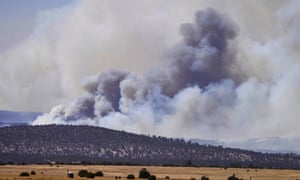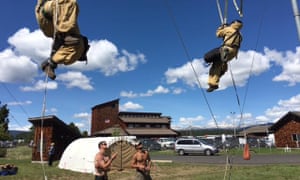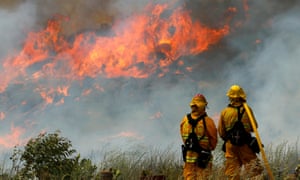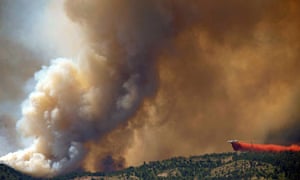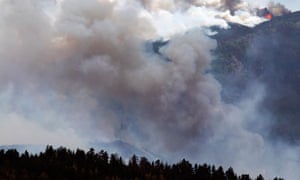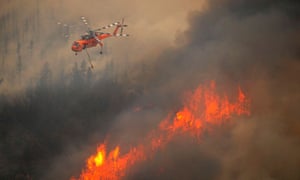–
More than 5,000 firefighters have battled multiple wildland blazes in dry, windy weather across the south-west, including a fire that has destroyed dozens of structures in west Texas and another picking up steam again in New Mexico.
Evacuation orders remained in place on Thursday for residents near the wildfires in Texas, Colorado and New Mexico. High winds prevented officials from sending aircraft to drop retardant or water in many places.
Dangerous fire weather fuelled by gusty winds, high temperatures and extremely low humidity was predicted to continue through Friday, especially in New Mexico, where the largest US wildfire has burned for more than a month and the governor expects the number of structures destroyed will exceed 1,000.
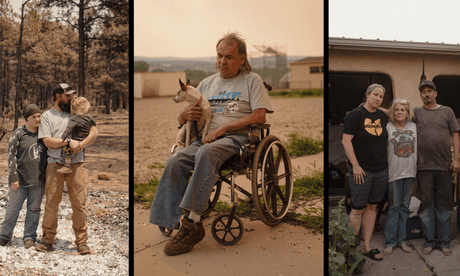
–
Fire officials said ground crews worked hard to keep the most active flames in check at the fire in a region between Santa Fe and Taos.
“Today, we saw a real good, old-fashioned firefight out there,” US forest service fire behavior analyst Stewart Turner said on Thursday night. “Tomorrow is going to be a big day, bigger than we saw today.”
Gusty winds were expected on Friday before easing into the weekend when cooler temperatures also should provide some relief, Turner said.
More than 2,100 fire personnel were fighting that blaze, which has burned more than 473 square miles (122,000 hectares) of timber and brush in a region east of Santa Fe and southeast of Taos.
Only about a third of the fire’s perimeter is estimated to be contained. But fire operations chief Carl Schwope said crews quickly snuffed out out new fires sparked by embers blowing ahead of the main blaze in steep, rugged terrain.
“Aircraft got shut down early because of high winds, so they are there on their own,” Schwope said. “Across this entire fire area, things are looking really favorable, a lot better than we had expected it to look at his time yesterday.”
He added: “It doesn’t mean we didn’t have fire growth today and we are definitely going to see more fire movement tomorrow. But as of now, things are looking really good.”
In Texas, the Texas A&M forestry service said the fire that has burned dozens of homes was still only 5% contained on Thursday afternoon after charring more than 15 square miles (3,800 hectares) of juniper and mesquite brush 18 miles (29km) south-west of Abilene.
That fire had prompted the evacuation of the historic town of Buffalo Gap on Wednesday. Forestry service spokesman Stuart Morris said the town had reopened Thursday and that no injuries had been reported, but 27 structures had been destroyed.
Morris said in an email on Thursday night that a post-fire assessment team was working to document what kind of structures were destroyed and that it was not yet clear how many were residences.
All of West Texas was under a red flag wildfire danger warning on Thursday, with an underlying drought and critically to extremely dry vegetation combining with temperatures of 100F (37.7C) and gusty winds.
However, the forestry service said a new weather pattern by the weekend is expected to usher in cooler temperatures and moisture that could limit potential for wildfire activity on Saturday and Sunday.
Wildfires have broken out this spring earlier than usual across multiple states in the western US, where climate change and an enduring drought are fanning the frequency and intensity of forest and grassland fires.
–
Topics
Related stories
Most viewed










